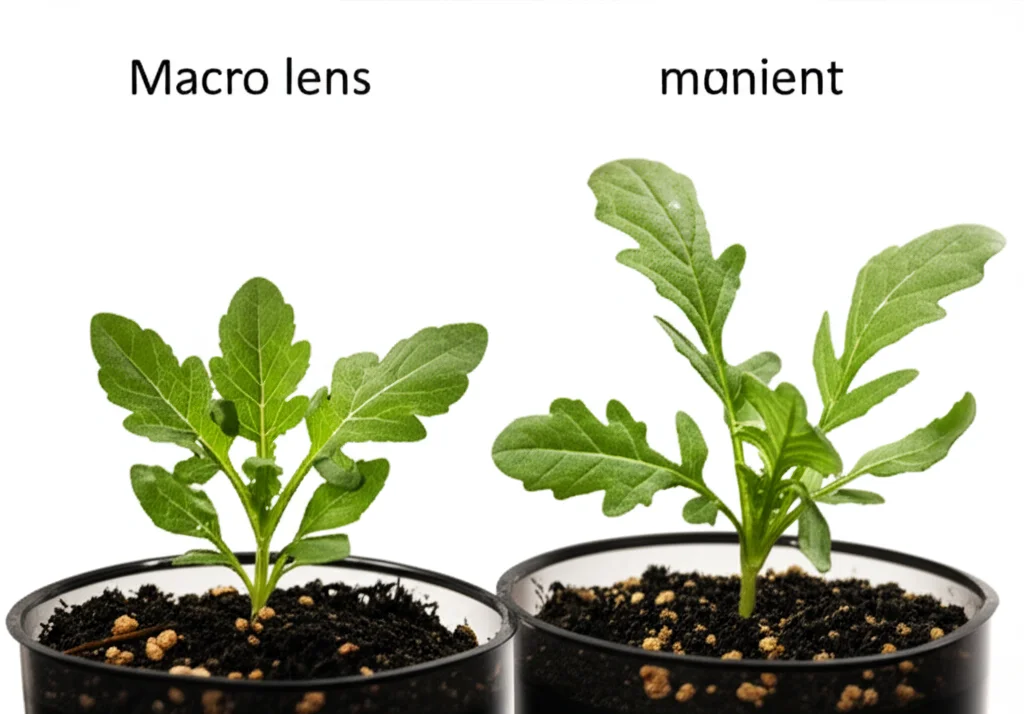Missing Pieces: How Gene Deletions Change Plants (and Why They Don’t Compensate)
Alright, let me tell you about something pretty fascinating happening in the world of plant genetics. You know how sometimes, bits of our genetic code, our DNA, can get messed up? One way this happens is through something called a “deletion,” where a piece of a chromosome, carrying a bunch of genes, just goes missing. Now, if you lose *both* copies of an essential gene, that’s usually lights out for the organism. But what if you only lose *one* copy? That’s a *heterozygous* deletion, and it leaves you with just one working copy of all those genes in the deleted region.
For a while, folks thought that maybe the remaining copy of the gene would just work harder, kind of like a single parent picking up the slack for two. This idea is called *gene dosage compensation*. It’s a well-known trick, especially on sex chromosomes in animals like fruit flies (*Drosophila*) and even us humans, where males and females have different numbers of X chromosomes. But does it happen on the regular chromosomes (autosomes)? And does it happen when you have these big, multi-gene heterozygous deletions? That’s the big question!
New technologies are making it easier than ever to create these kinds of mutations, whether through fancy genome editing or using things like heavy-ion beams (sounds intense, right?). Because they often cause these heterozygous deletions (to avoid killing the plant), understanding their effects is becoming super important.
So, I dove into this cool study looking at *Arabidopsis thaliana*, a tiny plant that’s a superstar in genetics research. They created a bunch of *Arabidopsis* mutants with these heterozygous deletions and checked out what happened.
The Setup: Creating Our Mutant Friends
Here’s how they did it: They started with normal *Arabidopsis* plants (the Col-0 type, basically the standard wild-type) and crossed them with mutants that had been zapped with heavy-ion beams. This zapping caused random, large deletions. By crossing them with the wild type, they got plants where one chromosome copy was normal, and the other had a big chunk missing – classic heterozygous deletions.
They ended up with 12 different mutant lines. The size of the missing chunks varied quite a bit, from a relatively small 50.9 thousand base pairs all the way up to a whopping 2.03 million base pairs. And the number of genes lost in these deletions ranged from just 8 to a hefty 92! That’s a lot of missing genetic instructions.
What We Saw: Phenotypes!
The first thing they looked at was how these plants *looked* and *grew*. Did these missing gene chunks actually *do* anything visible? Oh boy, did they!
They checked things like leaf shape, how much the plants weighed after a couple of weeks (fresh weight), and when they started flowering (bolting time). What they found was pretty striking: nine out of the 12 mutant lines showed clear changes compared to the normal wild-type plants.
Leaf shapes were different in some. Fresh weights varied significantly in several mutants. And flowering times were all over the place – some bolted faster, some slower.
Here’s a really interesting twist: While some mutants had reduced growth or delayed flowering (which you might expect when genes are missing), *five* of the mutants actually showed *increased* fresh weight! Yep, losing some genes seemed to make them grow *more* in the early stages. How wild is that? It wasn’t just about things going wrong; sometimes, these deletions seemed to have a beneficial effect, at least under these specific conditions.
And get this, the size of the deletion or the number of genes missing didn’t seem to directly predict *how much* the phenotype changed. It wasn’t a simple case of “lose more genes, get weirder.”

The Big Question: Is Dosage Compensation Happening?
Okay, so we know the deletions cause phenotypic changes. But *why*? Is it because the remaining gene copies aren’t picking up the slack? This is where the dosage compensation question comes in.
To figure this out, they looked at gene expression levels using a technique called RNA-sequencing (RNA-seq). They checked gene activity in different tissues and at different stages: whole plants at 14 days old, and leaves and flower buds at 40 days old.
They compared the gene expression in the mutant plants to the normal wild-type plants. For genes *outside* the deleted regions, the expression levels were pretty much the same between mutants and wild type – right around a 1:1 ratio. That’s what you’d expect.
But for the genes *inside* the heterozygous deletion regions? Their expression levels were consistently cut in half, hovering right around a 0.5:1 ratio compared to the wild type. This was true across all the tissues and developmental stages they tested.
This is the key finding: For the vast majority of genes in these heterozygous deletions, *gene dosage compensation simply did not occur*. The remaining single copy was just chugging along at its normal rate, not trying to double its output to make up for the missing partner.
Diving Deeper: Dosage Balance Genes and Trans-Effects
The researchers also looked specifically at a group of genes called *Dosage Balance Genes* (DBGs). These are genes that are known to be sensitive to having the right number of copies, often because they work together in complexes. You might think *these* genes, if any, would show compensation. But nope, even for the 50 DBGs included in the deletions across the mutants, their expression was also significantly reduced – halved, just like the others.
They also checked if the genes *outside* the deleted region were changing their expression in response to the deletion (a “trans-effect”). This didn’t seem to be happening either. Why no trans-effect? Maybe the deletions weren’t big enough to trigger a system-wide response, or perhaps key regulatory genes needed for that response weren’t among the deleted ones. Compared to studies in maize with much larger deletions, these *Arabidopsis* deletions, while substantial, might have been too small to kick off that kind of domino effect.

Why Arabidopsis is Different (or Not?)
It’s interesting because dosage compensation *does* happen on sex chromosomes in some plants, like *Silene latifolia*. And in *Drosophila*, while whole X chromosomes compensate, small autosomal deletions often lead to dosage effects without compensation, similar to what’s seen here in *Arabidopsis*. Maize shows *some* autosomal compensation, but maybe it’s more tolerant to aneuploidy overall.
So, *Arabidopsis* seems to fall into the camp where autosomal heterozygous deletions, at least of this size, don’t trigger a widespread compensation mechanism. The exact reasons why plants differ in their ability to compensate are still a bit of a puzzle, especially since *Arabidopsis* has some similar genetic machinery to species that *do* compensate. Maybe the deletions weren’t large enough to disrupt the gene network enough to force a compensatory response.
The Takeaway: Deletions Cause Changes Because Compensation is Absent
The main conclusion is pretty clear: the phenotypic changes observed in these *Arabidopsis* mutants are likely a direct result of the reduced gene expression (halved dosage) in the deleted regions, precisely because the plant *isn’t* compensating for the missing copies. It’s like running a factory with half the usual number of workers in one department – things are just going to run differently, and that difference shows up in the final product (the plant’s phenotype).
The Unexpected Potential for Breeding
Traditionally, plant breeders have focused on single gene mutations or homozygous changes. Heterozygous deletions were often seen as potentially harmful or just not interesting because their effects weren’t well understood. But this study throws a fascinating curveball. The fact that some of these heterozygous deletions led to *beneficial* traits, like increased fresh weight, suggests they could be a valuable, untapped resource for plant breeding.
While it’s tricky to pinpoint exactly which deleted gene (or combination of genes, or even regulatory elements) is causing a specific effect, the ability to easily generate these deletions using techniques like heavy-ion irradiation or CRISPR opens up new possibilities. We need more research to see how these deletions perform under different environmental stresses and in other plant species, but the potential is definitely there.
So, next time you see an *Arabidopsis* plant, remember that even losing a piece of its genetic puzzle can have profound effects, and sometimes, those effects might even be surprisingly positive, all because the plant decided not to compensate for the missing bits. It’s a reminder that genetics is full of complex, sometimes counter-intuitive, mechanisms!
Source: Springer







